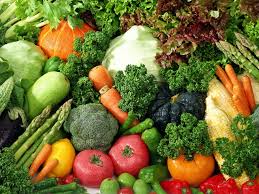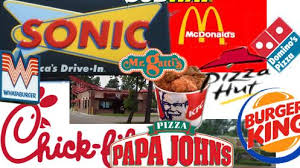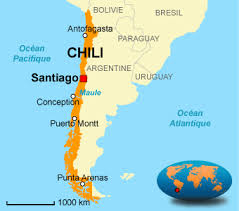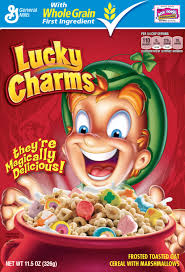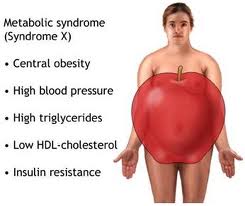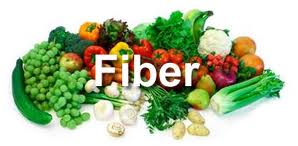Week 14: Against the Grain?
 Friday, January 29, 2016 at 2:03PM
Friday, January 29, 2016 at 2:03PM 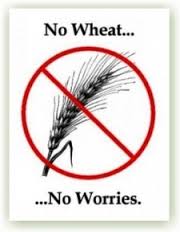 It is so hipster to say, "I don't eat wheat, the gluten you know." This makes the whole gluten-free movement suspect, it seems too trendy. However, just because something is trendy does not mean it is false. I thought I would begin with the area in this new movement that actually hurts the health of those that follow this trend.
It is so hipster to say, "I don't eat wheat, the gluten you know." This makes the whole gluten-free movement suspect, it seems too trendy. However, just because something is trendy does not mean it is false. I thought I would begin with the area in this new movement that actually hurts the health of those that follow this trend.
Don't eat the fake food that the agribusiness food conglomerates pass off as health food. We have all seen it: chocolate covered gluten-free pretzels, gluten-free frozen waffles, highly-processed gluten-free crackers, and gluten-free chicken nuggets. You should not eat these in their gluten forms, let alone their non-gluten forms. I must admit I like chocolate covered pretzels, but I don't eat them. In addition, for most people who do not seem to have a problem with gluten, that switch from coarse whole grain bread to white-as-the-driven snow rice bread is probably hurting their health.
The video I posted last week suggested that 25% of our daily calories come from "healthy" whole grains. To me that is just crazy talk. (I will often suggest videos that I disagree with.) Even for those that do not have a problem with gluten this is just too much. If this percentage includes starchy vegetables like potato, then this seems about right for the "average" person.
But there is a danger to the idea of an average person. Let me quote someone with whom I usually agree, myself:
The average person should get a Pap smear every year. There is no controversy about this. This is because the "average" person is a woman. But if you are among the 49% of the population that is male this advice makes no sense. You are either male or female, there is no average.
This same point applies across a wide variety of health issues.
You either have a gall bladder or you don't. Since the gall bladder helps in fat digestion, someone without one needs to take particular care with fats in their diet. Someone who is diabetic needs to eat differently than someone who is not diabetic. If you have insulin resistance, your diet needs to be different than if your insulin functions well.
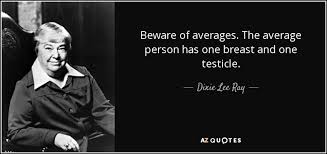
This same point appllies to wheat consumption.
Why are grains and starches such a large percentage of the average diet? They are cheap. This is often why poor people are obese, they just can't afford to avoid carbs. Let me give you an example from my local store. A loaf of cheap bread is $2.49, so for 17 slices the cost is 15 cents for 65 calories. Frozen brussels sprouts was $2.29 for 2.5 servings of 60 calories is 91 cents per serving. Ultimately we need enough calories to live, and carbohydrates are relatively cheap.
What is gluten? Wikipedia tells us.
Gluten (from Latin gluten, "glue") is a mixture of proteins found in wheat and related grains, including barley and rye. Gluten gives elasticity to dough, helping it rise and keep its shape and often gives the final product a chewy texture.
Gluten is the composite of two storage proteins, gliadin and a glutenin, and is conjoined with starch in the endosperm of various grass-related grains. Worldwide, gluten is a source of protein, both in foods prepared directly from sources containing it, and as an additive to foods otherwise low in protein. It is appreciated for its visco-elastic properties.
Gluten contains hundreds of proteins, which have low biological and nutritional value and high contents of prolamins (glutamines and prolines), as opposed to the grains of pseudocereals (gluten free), which are rich in proteins with high biological value (albumins and globulins).
Gluten for the most part goes right through you when you eat it. It provides no nutrients and no calories. This is not all bad, but it does result in problems for a subset of the population. Wiki continues:
Gluten-related disorders is the umbrella term for all diseases triggered by gluten, which include coeliac disease (CD), non-celiac gluten sensitivity (NCGS), wheat allergy, gluten ataxia and dermatitis herpetiformis (DH). Currently, their incidence is increasing in most geographic areas of the world. It can be explained possibly by the growing westernization of diet, increasing use of wheat-based foods included in the Mediterranean diet, the progressive replacement of rice by wheat in many countries in Asia, the Middle East, and North Africa, the development in recent years of new types of wheat with a higher amount of cytotoxic gluten peptides, and the higher content of gluten in bread and bakery products, due to the reduction of dough fermentation time.
What is the percentage that are effected by this? No one knows. The general estimate is that 1 to 2% of the population have a particularly nasty form of gluten reaction called celiac disease.
Coeliac disease (American English: celiac) (CD) is a chronic, immune-mediated mainly intestinal process, caused by the ingestion of wheat, barley, rye and derivatives, that appears in genetically predisposed people of all ages. CD is not only a gastrointestinal disease, because it may involve several organs and cause an extensive variety of non-gastrointestinal symptoms, and most importantly, it may often be completely asymptomatic. Added difficulties for diagnosis are the fact that serological markers (anti-tissue transglutaminase [TG2]) are not always present and many patients may have minor mucosal lesions, without atrophy of the intestinal villi.
But that is not the only problem with wheat. Many have digestive problems with wheat. For others the gluten ends up in the bloodstream and this causes antibodies to be formed.Wiki tells us:
Non-celiac gluten sensitivity (NCGS) is described as a condition of multiple symptoms that improves when switching to a gluten-free diet, after celiac disease and wheat allergy are excluded. Recognized since 2010, it is included among gluten-related disorders, but its pathogenesis is unknown. NCGS is the most common syndrome of gluten intolerance, with a prevalence estimated to be 6–10 times higher than that of celiac disease.
If this 6 to 10 times is correct then somewhere between 6 and 20% of the population has this problem. The video I will post next week for your homework suggests the figure of 10%.
Since I have run into this personally, let me tell you three stories.
My mother had a long history of digestive issues. But she ate what she was supposed to including "healthy" whole grains. Her muffins were to die for. Yet her stomach issues continued all her life. Oddly enough, there was a period where she made her own oat bread, and during that period she was better, but it never occurred to anyone that there might be a connection. Was there? I have no idea, but looking at her symptoms and the list you see of those with gluten issues, the correlation is quite strong. I wish she had known to try taking gluten out of her diet.
My wife also has had a long history of stomach issues. She even had a biopsy to see if she had celiac disease, although oddly enough this was not mentioned to us as a possibility. For some reason no test was ever done, even by the expert we consulted, to test for H. Pylori. Our GP tested her and she had it. After two treatments she was much improved. But yet she still had problems so the doctor, again the GP not a specialist in that field, tested her for gluten sensitivity. She was sensitive, but only slightly. But regardless of the ambiguous test results she removed wheat from her diet and improved the rest of the way back to close to where she was before the stomach issues began. She will occasionally eat bread, especially when she goes home to Russia--Russian bread has never given her any problems. Many others have also reported that non-US bread does not cause these symptoms.
(For those who might also live In Idyllwild, my doctor is Kenneth Browning at Fern Creek Medical Center.)
I often said to myself, "At least I do not have to worry about this!" But our doctor, having seen so much problems with gluten in the diet started given the antibody test to all his patients. Guess what? It seems that I had about twice the reaction to gluten that my wife had, yet I had no symptoms. Apparently this is relatively common. A later test showed no gluten issues, but this was after I quit eating gluten and that will result in a lower antibody count. Do I have gluten sensitivity? I have no idea. While a physician will use the tools they are given, I am not sure how good a tool testing for antibodies actually is for gluten sensitivity.
Before I give us our action plan for this week I think a little homework is in order as my action plan for this week is very difficult and I think that you will want more information before you decide to start it.
Here is the case against removing bread:
Here is a short video that favors removing gluten:
I decided not to include a video from Dr Davis, the most popular advocate of removing gluten. While I enjoyed his book,
I am not convinced that gluten causes all health issues in American today. The critique of Dr Davis from the Canadian news program embedded above seemed fair in that regard. When you have someone claim that an issue causes everything, I think you are entering the world of pseudo-religion and have left the world of science. However the video, by focusing in on the most extreme view, ignores the fact that wheat is a problem for a substantial number of people, and this is often undetected and without symptoms. For example there are 2-3 million undiagnosed sufferers of celiac disease in America today. This says nothing about those with gluten sensitivity.
So since the test is not as helpful as one would like what is the solution? It is called an elimination diet. Web MD describes it this way:
1. Stop eating suspicious foods.
During this time, you will need to:
Carefully read food labels and ask how foods are prepared at restaurants so you can be sure to avoid possible triggers.
Keep a food diary to record the foods you are eating.
If you remove a certain food and the allergy symptoms go away while following this diet, your doctor can usually confirm that that food may be the cause of your problems.
Many of these diets suggest eliminating huge swaths of the traditional American diet. As you may have noticed, I do not think drastic change is beneficial. If you want to do more research on this diet, you might consider J.J. Virgin's book:
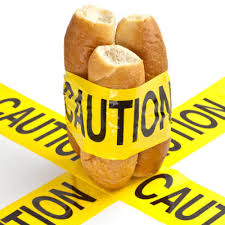 I have not read her book as I disagree with her premises of radical dietary changes, but I have found her helpful and entertaining on her multiple guest appearances on podcasts. The problem with this radical change is that it is not sustainable, and it also gives false information. If you give up a substantial portion of your current diet you will also be giving up the bad versions of these foods. It may be that the foods themselves are fine, but the version of that food you are eating is bad.
I have not read her book as I disagree with her premises of radical dietary changes, but I have found her helpful and entertaining on her multiple guest appearances on podcasts. The problem with this radical change is that it is not sustainable, and it also gives false information. If you give up a substantial portion of your current diet you will also be giving up the bad versions of these foods. It may be that the foods themselves are fine, but the version of that food you are eating is bad.
So for this next week do some research. Consider buying a book on elimination diets. This next week eat up any wheat products that you may have on hand, remember that pasta is usually made from wheat. Do not buy any wheat products this week. This will involve actually reading labels as the food industry puts wheat in a large number of products. Then next week we can discuss what you will eat instead of wheat
 Plan What You Eat
Plan What You Eat 